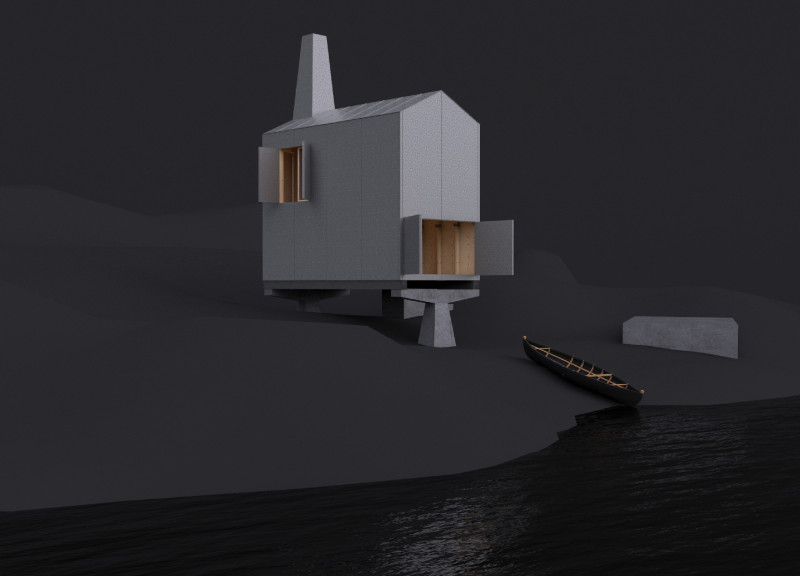5 key facts about this project
The architectural design of "Amber Road" serves as a versatile shelter that integrates into various natural environments such as wetlands, shorelines, forests, and sloped terrains. Its primary goal is to provide a safe and comfortable refuge for visitors, while also promoting an interaction with the surrounding landscape. The design emphasizes adaptability, allowing the structure to function well across different conditions and user needs.
Design Intent
The shelter is elevated to protect against harsh weather while maintaining a strong connection to nature. Inside, the space can accommodate up to ten guests, with furniture arrangements that can easily be changed to suit different activities. The use of wooden surfaces creates a warm and inviting atmosphere, ideal for those seeking shelter during outdoor adventures.
Materiality and Structure
Construction features wooden beams and plywood sheets, which provide strength and stability against the wind. The exterior is clad with galvanized metal sheets, offering effective protection from rain while requiring minimal upkeep. This blend of materials reflects a focus on durability, ensuring the shelter can withstand the test of time in various environments.
Functional Design Elements
The shelter's shape contrasts with the landscape, encouraging a visual interaction between built and natural forms. Openings are strategically placed to let in natural light and provide views. A high wall opening brings in sunlight and connects users to the sky, enhancing the experience of being in nature while ensuring proper ventilation.
Access and Security Features
The design considers user accessibility by including a permanent ramp for easy entry. The shelter can be fully closed and locked when not in use, protecting it from weather and unauthorized access. This attention to safety complements its usability, making it a practical choice for diverse users.
One distinct design detail is the variety of openings, allowing occupants to choose their level of exposure to the outside world. This feature not only provides different perspectives of the landscape but also enhances comfort and a sense of belonging in nature.


























